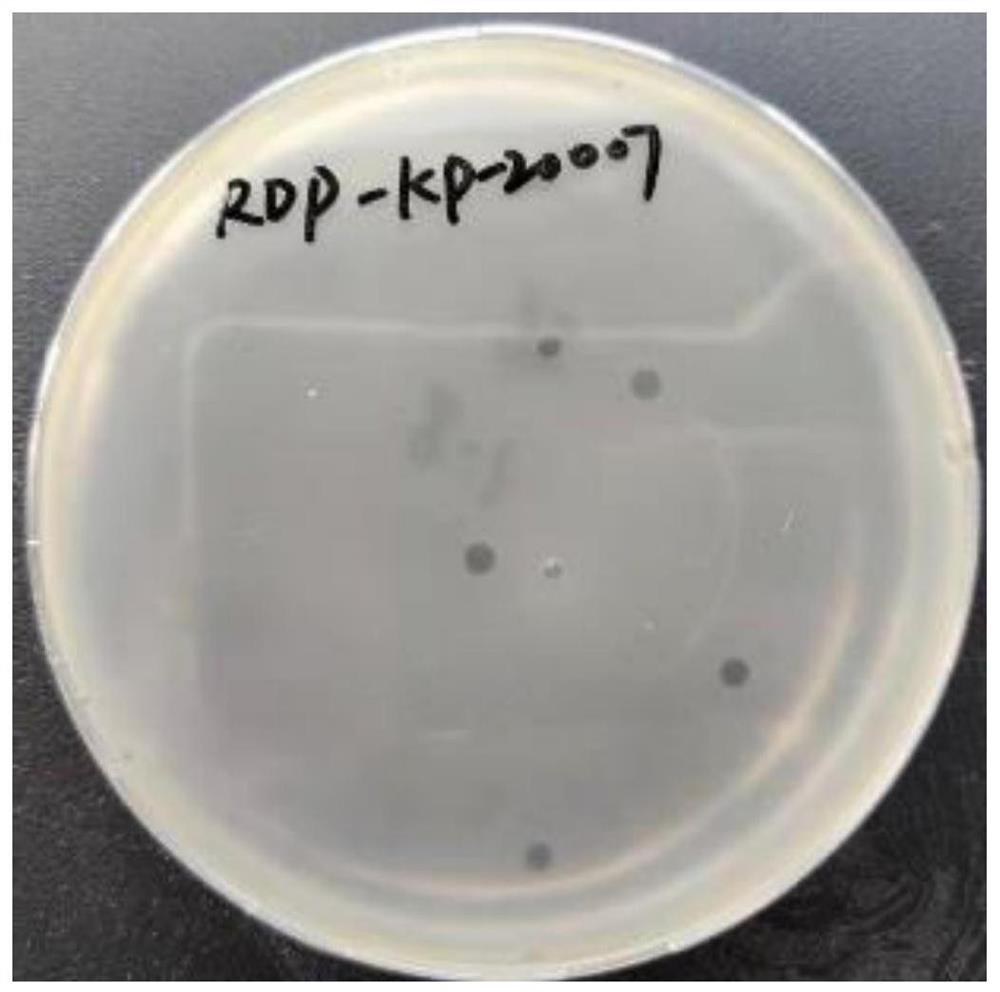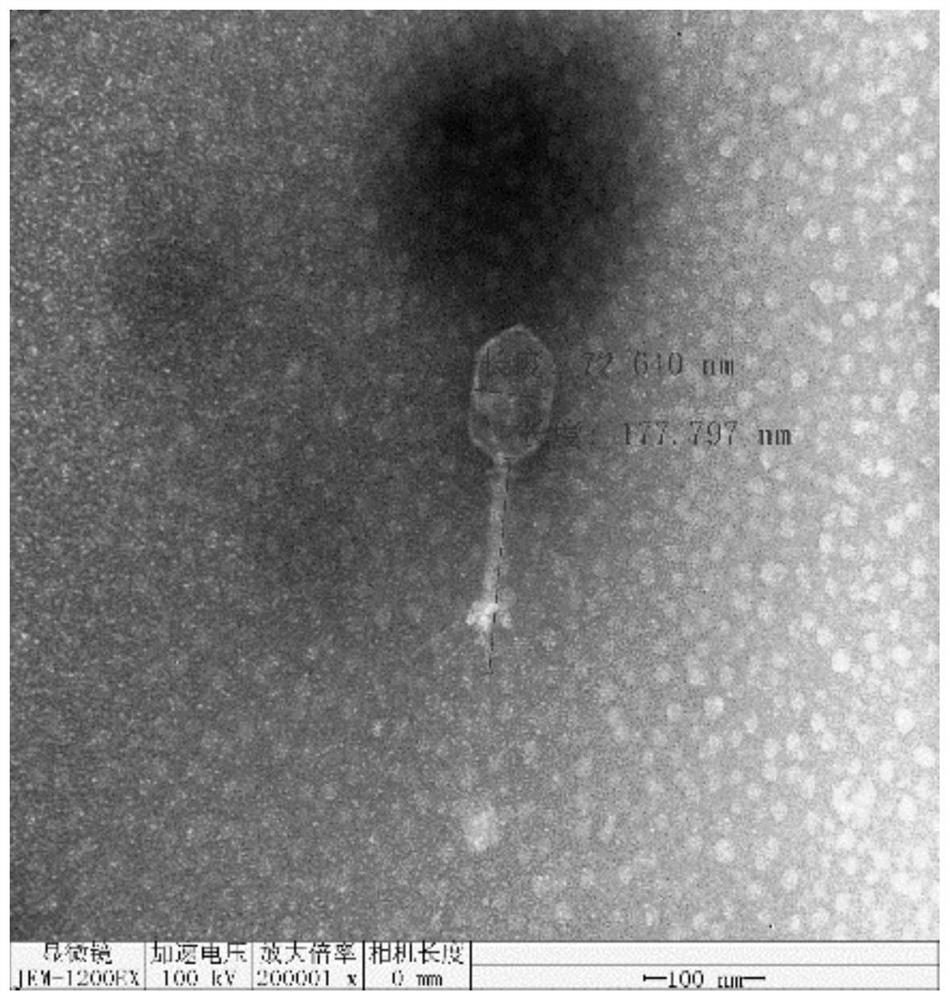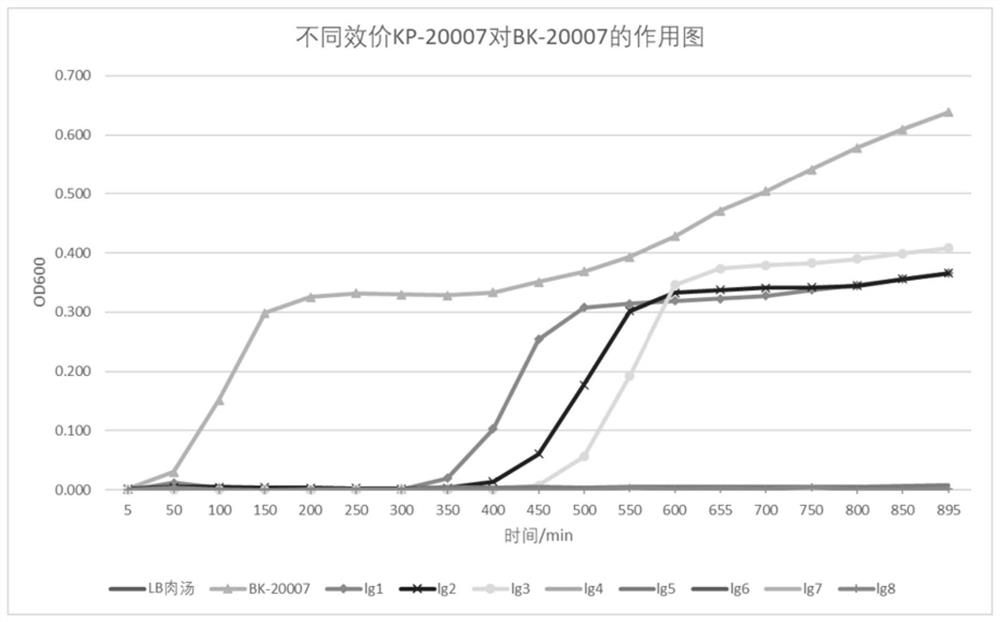A highly lytic Klebsiella pneumoniae phage rdp-kp-20007 and its application
A technology of RDP-KP-20007, Klebsiella pneumoniae bacteriophage, applied in bacteriophage, virus/phage, medical raw materials derived from virus/phage, etc. properties, etc., to achieve good application prospects and strong cleavage activity.
- Summary
- Abstract
- Description
- Claims
- Application Information
AI Technical Summary
Problems solved by technology
Method used
Image
Examples
Embodiment 1
[0033] Example 1 Isolation and identification of pathogenic Klebsiella pneumoniae BK-20007
[0034]Samples were taken from the livers of chickens with Klebsiella pneumoniae bacterial disease, inoculated in DHL medium by aseptic operation, and cultured at 37°C for 18-24h. Klebsiella pneumoniae forms pale pink colonies on DHL agar plates, the large surface is raised, smooth and moist, and it is mucus-like.
[0035] Select pale pink colonies for continuous streak purification three times for biochemical identification. Transfer from DHL medium to Klebsiella disaccharide medium and culture at 37℃ for 18-24h, the slant surface produces acid, the bottom layer produces acid and gas, and it is negative for hydrogen sulfide. Biochemical identification showed that V-P test was positive, nitrate reduction test was positive, M.R was negative, Simon's citrate utilization test was positive, malonate test was positive, urease was positive, lysine decarboxylase was positive, ornithine decarb...
Embodiment 2
[0037] Example 2 Isolation and identification of Klebsiella pneumoniae phage RKP-KP-20007
[0038] The liver samples used in the experiments of the present invention were collected from sick chickens in a broiler farm in Jimo, Qingdao in 2020, as samples for phage isolation.
[0039] (1) Isolation of phage RKP-KP-20007:
[0040] Take 10㎎ of liver and soak it in 10ml LB broth at 4°C overnight, centrifuge at 10,000rpm for 5min, and filter the supernatant to sterilize it with a 0.22μm microporous membrane. Take 3ml of the filtrate and 3ml of the host bacteria culture solution in logarithmic growth phase, add them to 20ml of autoclaved LB broth, and place them in a 37°C incubator overnight to culture to proliferate possible phages. Take 3 ml of the sample culture solution, centrifuge at 10,000 rpm for 5 min, and take the supernatant to filter and sterilize it with a 0.22 μm microporous membrane. Assume that the above filtrate contains bacteriophages. Use LB broth for gradient d...
Embodiment 3
[0046] Example 3 Morphological observation of bacteriophage
[0047] Using phosphotungstic acid negative staining method: 20 μL of phage proliferation solution (titer 10 11 pfu / mL) was dropped on the paraffin sheet, and the copper mesh was placed on it for 10 min and then removed to adsorb phage. Dry at room temperature for 2-3 min, stain with 2% phosphotungstic acid aqueous solution, absorb water after 2 min, dry naturally for 5 min, and observe the phage morphology by electron microscope.
[0048] Photo by electron microscope ( figure 2 ), it can be seen that the head of phage RKP-KP-20007 is icosahedral and is three-dimensionally symmetrical. The length of the head is 72.640 nm, and the length of the phage tail is 177.797 nm. .
PUM
 Login to View More
Login to View More Abstract
Description
Claims
Application Information
 Login to View More
Login to View More - R&D
- Intellectual Property
- Life Sciences
- Materials
- Tech Scout
- Unparalleled Data Quality
- Higher Quality Content
- 60% Fewer Hallucinations
Browse by: Latest US Patents, China's latest patents, Technical Efficacy Thesaurus, Application Domain, Technology Topic, Popular Technical Reports.
© 2025 PatSnap. All rights reserved.Legal|Privacy policy|Modern Slavery Act Transparency Statement|Sitemap|About US| Contact US: help@patsnap.com



